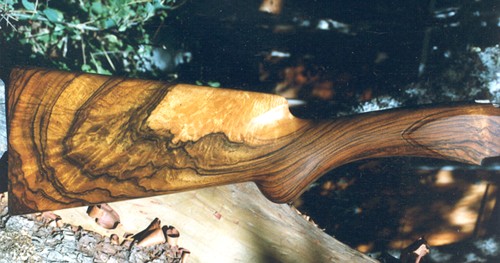I've never heard or read anything about helping seal the end grain, but the thought has crossed my mind. The end grain under the buttplate and at the forend is the most susceptible to drawing in moisture.
Walnut became the traditional gunstock material because at the time it was the cheapest wood that could be worked easily and still offer reasonable strength. It is not the strongest, toughest or best looking wood by a long shot. Covering the end with a much tougher wood, animal bone, or even hard plastic would help strengthen and seal the end. Same as on the grip cap. Having a tougher material in these areas probably also helps protect them and prevent them from splitting. When you split firewood, you hit the end grain.
Of course the real answer is probably something like this. Some hunter dropped his rifle and broke the end of the stock off. The only thing he could find to repair the broken stock with was a much darker piece of wood. After he finished all of his friends looked at it and said, "Man that looks good, I think I'll do mine that way."



